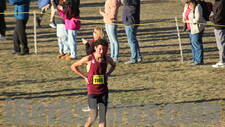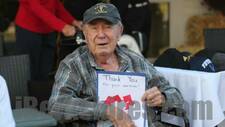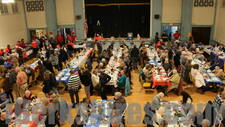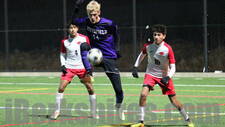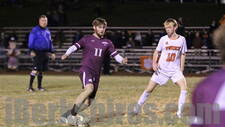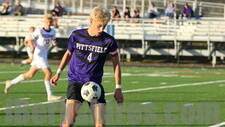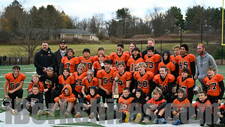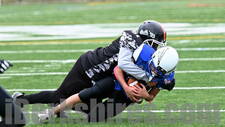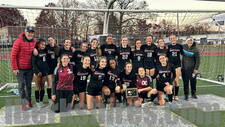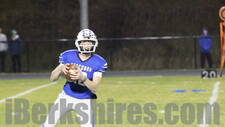Bytes from the Bean by Joe Manning 01-0312:00AM / Tuesday, January 07, 2003
THEN AND NOW
It was when I was standing in the middle of the road with my camera that I suddenly felt an eerie sense of history. On the pavement in front of me lay a loose-leaf notebook open to an 8 x 10 printout of a scanned photo of North Adams, dated circa 1890. It was identified as, “South from Houghton Street.â€
On what was then a dirt road was a row of simple houses. The road stretched out straight ahead for perhaps 300 yards, and then curved gently to the right. In the distance were church steeples on the left, and a long, sloping mountain to the right.
I was asked by the North Adams Historical Society to take 50 or 60 photographs from the approximate vantage points that a collection of old photographs were taken, some more than 100 years old. It has not been an easy task, but it turned out to be one of the most rewarding and entertaining experiences I have had in North Adams.
How did I find the spot on Houghton Street? Judging by how far away the mountain appeared, I was sure that it was taken from pretty far up. I drove all the way up to North Eagle Street, turned around, and wound my way down slowly. As I came down a hill and around a curve, I recognized the sloping line of the mountain. I pulled over, got out, walked back up a few yards, and turned around.
There I was, alternately looking through my viewfinder, and then looking down at the old photograph, all the while conscious that a car or truck might come over the hill and flatten me at any moment. The strong December wind was a killer; my hands were freezing.
One hundred years had changed a few things. There were a lot of trees blocking the view of the steeples, and some of the houses were missing or looked vastly different. But the roof of the house in the left foreground looked identical to the one in the old photo. So did the way the road curved around to the right farther down. I knew I had the right spot.
It was a strange few moments. After I was finished, I thought to myself, “Some photographer stood in the same spot about 112 years ago and did what I just did. Why was that person taking the picture, and what did he or she think of the view?â€

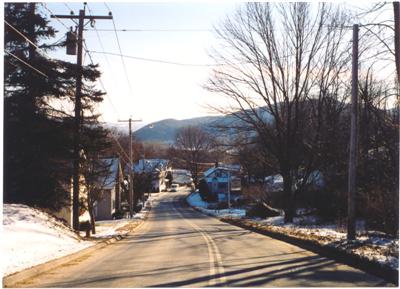
The general locations of most of the photos were identified. However, some were close-up pictures of storefronts, with the only clue to their locations being the name of the store on the sign, and the approximate date of the photo. For those, I looked up the store in the city directories at the library to find the address.
Several were on Eagle Street, among them a 1911 shot of Miller’s Candy Kitchen, now Mia’s Exchange. The façade had changed so radically, that it was hard to imagine it being the same place. What’s more, it took me a number of attempts to get the photo, because every time I walked over there, a large van was parked in front.
In most cases, I was able to locate the vantage points by keying in on the one thing that hadn’t changed in the scenes: the mountains. As in the Houghton Street photo, the mountains in the background had unique identifiers, like the way they sloped, or how far away they appeared. This came in handy when I had to locate the place where an old photo of Union Depot had been taken. I figured out that the now-vacant area, just south of the American Legion parking lot, was photographed from a spot near the south entrance to the Legion.
The church steeples also helped. Many of them have not changed in the last 100 years. In one instance, where I was duplicating a scene looking east from the middle of Main Street, it was the relationship between two steeples that gave me perspective.
Several of the pictures presented unusual problems, some amusing and some dangerous. One photo of the corner of Marshall and Main appeared to have been taken either from the second floor or the roof of the old James Hunter Machine Company, the site of the present city hall. After much thought, I figured out that I could come pretty close to the spot by taking the picture from the mayor’s office. So thanks to John Barrett III, I was able to get that one.
A scene looking east from West Main, near K-M Toyota, required me to stand in the middle of perhaps the busiest area of high-speed traffic in the city. Fortunately, a friend was walking by and alerted me when cars were approaching. He cracked, “If you’re not careful, you could wind up being one of the Then and Now photos.
The most interesting shots (and the saddest) were the areas where urban renewal had torn down buildings like the old city hall, the train station, and the gorgeous arched entrance to 85 Main Street (Apothecary Hall).
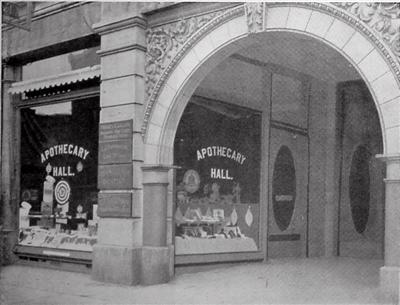

None had more impact than Randy Trabold’s lovely photo of Bank Street, facing north from Summer Street. If you look through the narrow alley-like street, bordered on both sides by tall brick and stone buildings, Newberry’s appears to be at the other end of a train tunnel. But now, you see cars parked on either side of a concrete divider.
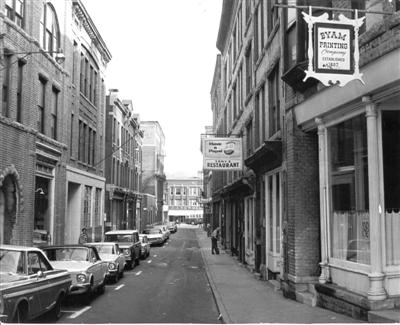
Photo Credit North Adams Transcript.
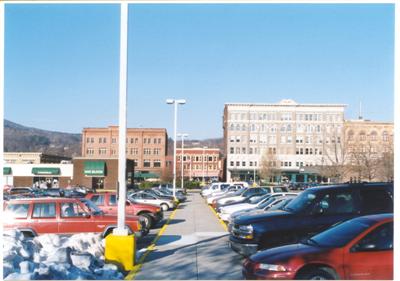
I wonder if 112 years from now, someone will stand at that same spot on Houghton Street, and take the same photo I took. What will it look like then? One thing I’m pretty sure about: that sloping mountain will still be there.
These and many other photos will be on display at the North Adams Museum of History and Science, located at Western Gateway Heritage State Park. The exhibit will be ready for viewing sometime in January, and will run through April. Hours are 10:00 to 4:00 on Saturdays, and 1:00 to 4:00 on Sundays. For more information, call 664-4700, or email nahs@bcn.net. Also, the museum’s new website will be up soon. It’s at www.northadamsmuseum.com.
More about Joe Manning here
Visit Joe's website at: www.sevensteeples.com.
Email Joe at: manningfamily@rcn.com. |








